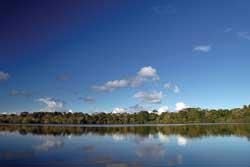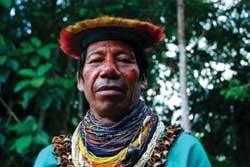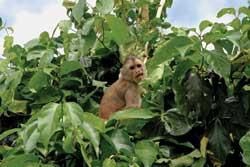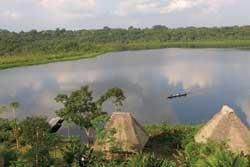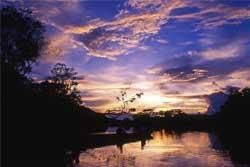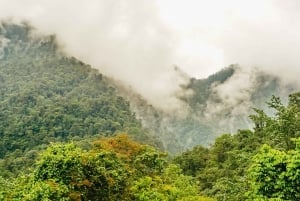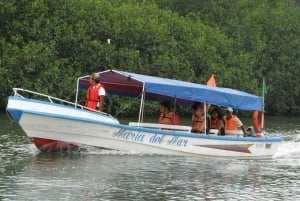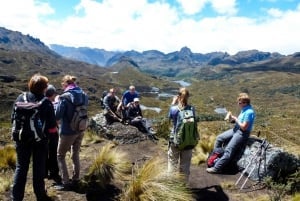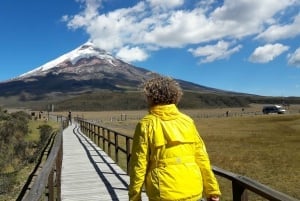The Amazon Rainforest
Flying to the heart of the Ecuadorian rainforest gives an astonishing view of the west Andes range, and in a few minutes (the flight from Quito takes 35 minutes) the explorer is already immersed in the Amazon rainforest. Driving is also an exciting way to reach the region, the main gateways being Quito, Baños, and Cuenca, but it is really easily accessible from anywhere in the country, as it covers almost the whole eastern half, from the Colombian border to the north to the Peruvian border on the south; reaching the closest cities in the rainforest can be as short as a 2-hour drive.
This is the site of the famous legend of El Dorado. Although this region, locally known as "El Oriente" (The East), accounts for almost half of the land mass of Ecuador, less than 6% of the country's population inhabits it. Many ancient tribes call this jungle home: Achuars, Cofans, Waoranis, Kichwas, Shuars, among others, live, fish and hunt on the riverbanks of the rainforest. While some cultures struggle to keep their ancestral traditions, language, and way of life by isolating themselves into remote areas, others have decided to integrate with the modern civilization without losing their full identity and understanding of the world.
The most important portion of the mega-diversity of Ecuador is found in the Amazon Rainforest, which is shared with Colombia, Venezuela, Brazil and Peru. It represents over half of the planet’s rainforests, and it comprises the largest and most species-rich tract of tropical rainforest in the world. One in ten known species in the world lives in the Amazon Rainforest; this constitutes the largest collection of living plants and animal species in the world.
According to the experts, the region is home to about 2.5 million insect species, tens of thousands of plants, and some 2,000 birds and mammals. To date, at least 40,000 plant species, 2,200 fish, 1,300 birds, 400 mammals, 400 amphibians, and 350 reptiles have been scientifically classified in the region. One in five of all the bird species in the world live in the rainforests of the Amazon, and one in five of the fish species live in Amazonian rivers and streams. The Ecuadorean rainforest has a good share of the immense biodiversity of the Amazon basin, despite its relative small size. The most pristine parts of the Ecuadorian rainforest are full of life: parrots fly among imposing trees; amazing plants intertwine with tree branches; monkeys jump through the canopy maybe playing games with a jaguar; shy pink dolphins emerge from beautiful lakes while groups of piranhas quickly swim down river. And at night, the sounds of the jungle can be overwhelming.
There are several National Parks and Reserves in the area, the largest and most important ones are Yasuní National Park and Cuyabeno Wildlife Reserve. The latter is located in the province of Sucumbíos, the most northern province of the Oriente. The province's capital city, Nueva Loja (also known as Lago Agrio), is a good base for visiting the park because it is well served and easily accessible by plane or bus. Visitors can find tour and lodging offers there. The Cofan Zábalo community is situated in the Reserve and offers lodging and a unique opportunity of culture learning and experiencing.


